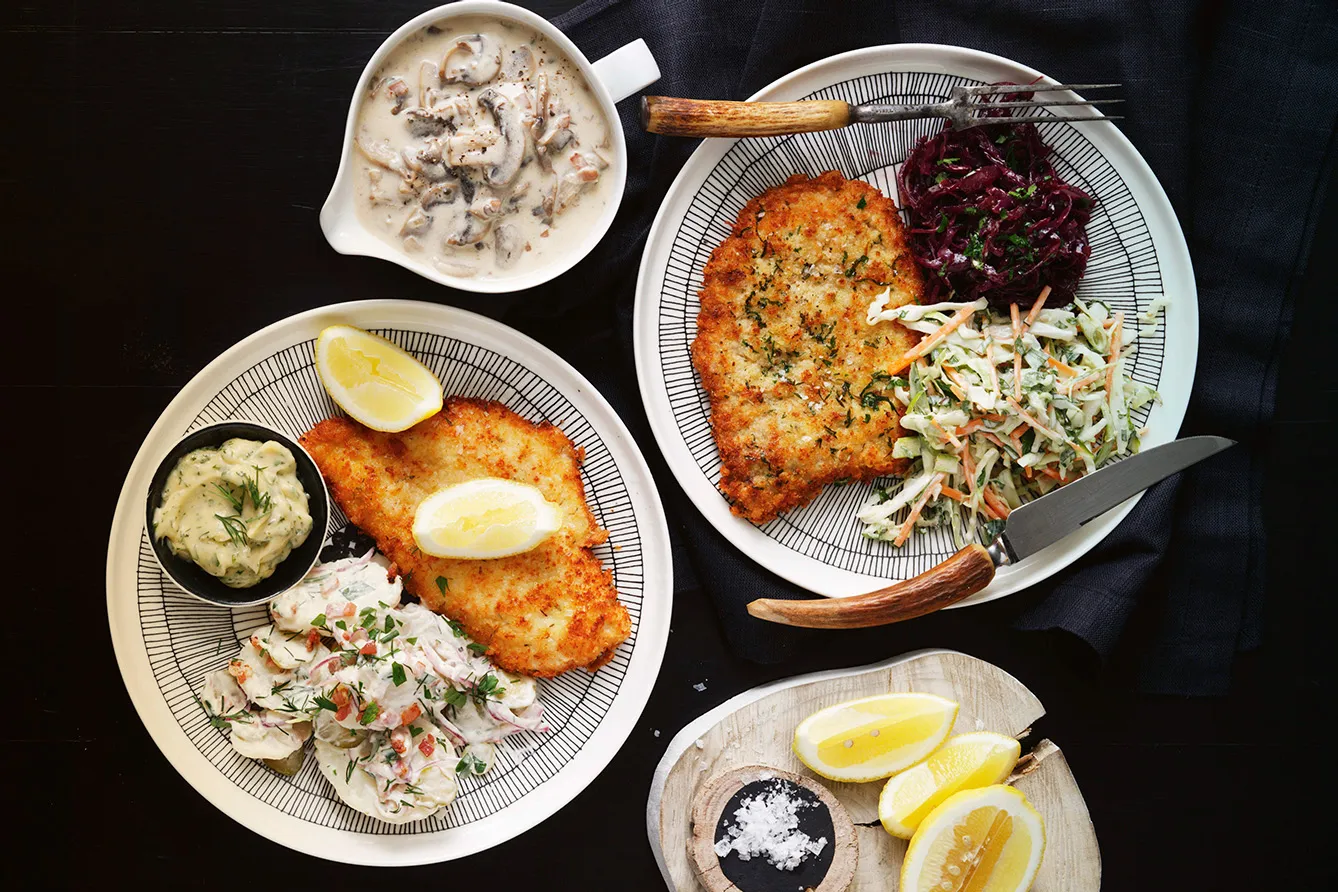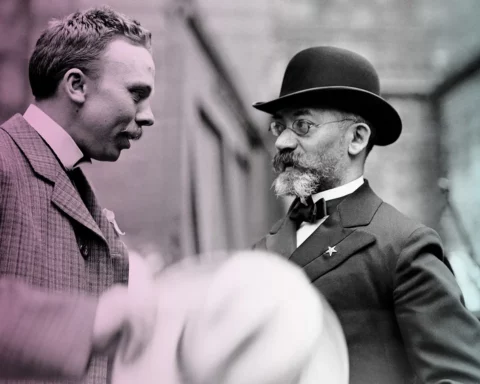Polish culinary storyteller Robert Makłowicz once recalled a story about his friends from abroad who ordered the most traditional Polish dish. They were served schabowy, a pork cutlet with sauteed potatoes and braised sauerkraut. They started laughing and, upon inquiry, explained that this was precisely the same dish they were served in southern Germany when they requested the most typical dish of the region.
Finely pounded and breaded pork loin is a hallmark of Central European cuisine and can perhaps thank its undeniable success to following the rule, “fake it ’till you make it.” But what was it supposed to be copying?
Wiener schnitzel done well
The most probable answer is Wiener schnitzel, a more elegant variant of schabowy and its cousins, rooted in the city it is named after (aka Vienna). We suppose that’s where its inherent elegance comes from. And by ‘elegance,’ we mean not only the distinguished presence of the dish but also its lightness on the stomach.
Wiener schnitzel is – contrary to pork schabowy – a veal dish. When done well, it is very thin and, though made from a single slice of loin half a centimeter thick, can take most of a plate’s area. It’s breaded thoroughly in a three-step process: flour – egg – breadcrumbs. The breading should be light and spongy. It’s then dropped in a heated pan (over 160 C) with either lard (preferred) or clarified butter. The cutlet is ready when it is golden brown and crispy on the outside and tender on the inside. Served with a quarter of a lemon, you might even be momentarily fooled into thinking you’re eating a fish dish.
Now, to complete the dish, some sides are required. The classic version comes with a green salad made from butter lettuce, vinegar, and onions as well as another Austrian and German delicacy of boiled potatoes dressed with an herby sour cream-based sauce.
Is schnitzel really Wiener?
The first known mention of this Viennese dish named comes from an 1831 cookbook, though its history is enshrouded in questions. This is because a similar breaded veal cutlet is served in Milan and is known there as Veal Milanese (or cotoletta alla milanese). The Italian dish has a history that impressively dates back to the 12th century and perhaps even to Roman times.
Some speculate that Australian field marshal Joseph Radetzky brought the concept for the dish back from the Italian campaign in 1857 (which would have been over two decades later than the first cookbook mention). The legend doesn’t really hold water but can perhaps be traced back to one military field report where Emperor Franz Joseph’s alleged adjutant, Count Attems, scribbled a mention of the Wiener schnitzel’s Italian inspiration in a margin. But then again – this is also tricky since we don’t have any definitive proof that there was even a Count Attems, and we surely would if such a person was an adjutant to the emperor himself.
It is possible, then, that Wiener schnitzel was imported from Italy or that it is a descendant of a long line of fried meats in Central Europe. Whatever its genesis, when it found its place in 19th-century cuisine, it was surely there to stay. As one English soldier and writer noted, his first dish of this kind (tasted in Rotterdam in the Netherlands) was “a gastronomic dream.”
See Also: The Austrian Origin of French Croissants







